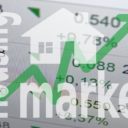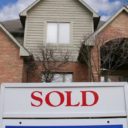

Washington, D.C. (PPD) — New residential construction statistics for housing starts and building permits again beat forecasts in October, though it’s unclear how the housing market will react to the election. The new residential construction statistics report below is released jointly by the U.S. Census Bureau and the U.S. Department of Housing and Urban Development (HUD).
Building Permits
Privately-owned housing units authorized by building permits came in at a seasonally adjusted annual rate of 1,545,000. While that’s essentially unchanged (±1.3%) from the downwardly revised rate of 1,545,000 in September, it is 2.8% (±1.6%) higher than the October 2019 rate of 1,503,000.
Forecasts ranged from a low of 1,520,000 to a high of 1,600,000. The consensus forecast was 1,545,000.
Housing Starts
Privately-owned housing starts came in at a seasonally adjusted annual rate of 1,530,000. This is 4.9% (±11.1%) higher than the revised September estimate of 1,459,000 and an 14.2% (±8.8%) gain from the October 2019 rate of 1,340,000.
Forecasts ranged from a low of 1,430,000 to a high of 1,530,000. The consensus forecast was 1,460,000.
Privately-owned housing completions in October were at a seasonally adjusted annual rate of 1,343,000. This is 4.5% (±9.5%) below the revised September estimate of 1,406,000. That’s 5.4% (±10.7%) above the October 2019 rate of 1,274,000.
Housing, Once Primed to Lead Economic Recovery, Now Uncertain
As People’s Pundit Daily (PPD) recently reported, indicators widely showed the U.S. housing market was “booming”, surpassing pre-pandemic levels and expectations. Experts foresaw housing leading the economic recovery and raised growth forecasts for the sector.
The NAHB Housing Market Index (HMI) reported builder confidence soared another 5 points to 90 in November, smashing the all-time high and beating the consensus forecast. However, the apparent economic firing on all four cylinders is no longer a given following the election, as changing policies will hinder growth.
“Historically low mortgage rates, favorable demographics and an ongoing suburban shift for home buyer preferences have spurred demand and increased new home sales by nearly 17% in 2020 on a year-to-date basis,” said NAHB Chairman Chuck Fowke. “Looking ahead to next year, regulatory policy risk will be a key concern given these supply-side constraints.”







